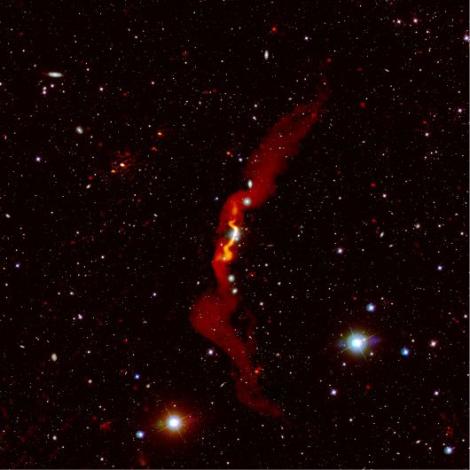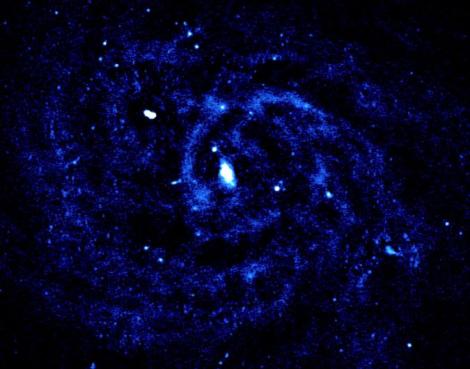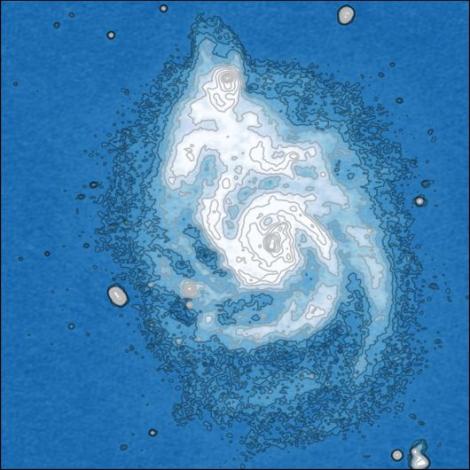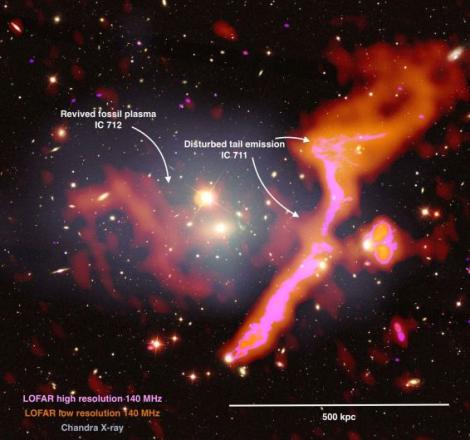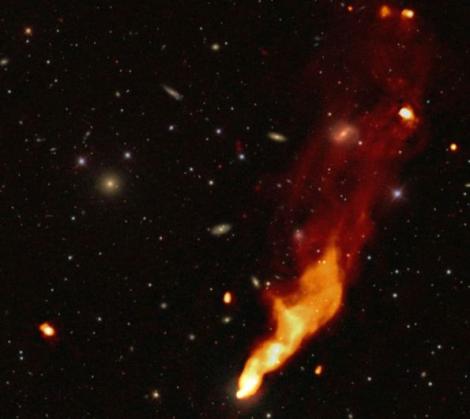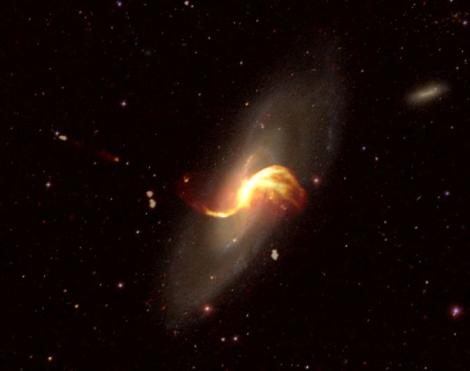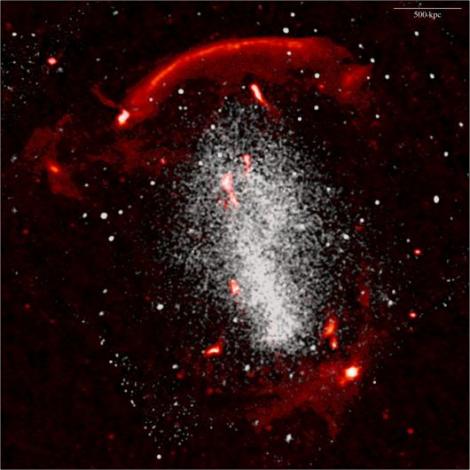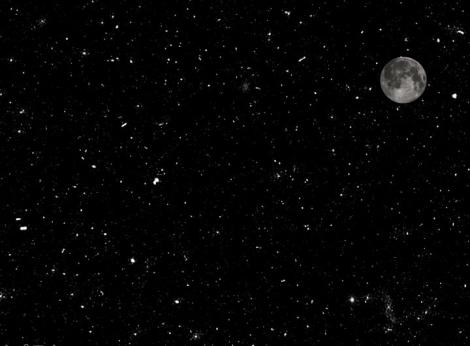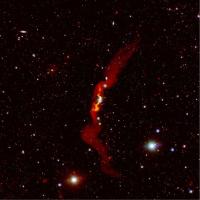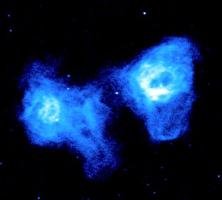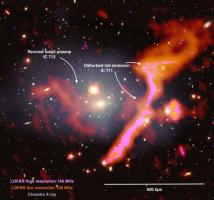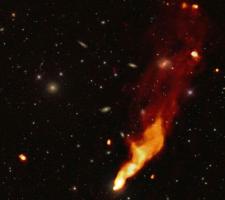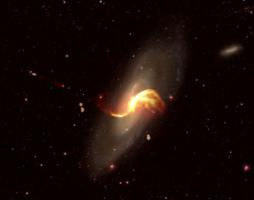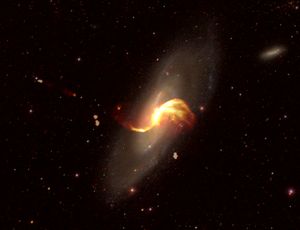
An international team of more than 200 astronomers from 18 countries has published the first phase of a major new radio sky survey at unprecedented sensitivity using the Low Frequency Array (LOFAR) telescope. The survey reveals hundreds of thousands of previously undetected galaxies, shedding new light on many research areas including the physics of black holes and how clusters of galaxies evolve.
The LOFAR telescope, the Low Frequency Array, is unique in its capabilities to map the sky in fine detail at metre wavelengths. LOFAR is operated by ASTRON in the Netherlands and is considered to be the world’s leading telescope of its type.
Radio astronomy reveals processes in the Universe that we cannot see with optical instruments. In this first part of the sky survey, LOFAR observed a quarter of the northern hemisphere at low radio frequencies. At this point, approximately ten percent of that data is now made public. It maps three hundred thousand sources, almost all of which are galaxies in the distant Universe; their radio signals have travelled billions of light years before reaching Earth.
Black holes
“If we take a radio telescope and we look up at the sky, we see mainly emission from the immediate environment of massive black holes. With LOFAR we hope to answer the fascinating question: where do those black holes come from? What we do know is that black holes are pretty messy eaters. When gas falls onto them they emit jets of material that can be seen at radio wavelengths.”, explains Huub Röttgering from Leiden University (the Netherlands).
Philip Best, University of Edinburgh (UK), adds: “LOFAR has a remarkable sensitivity and that allows us to see that these jets are present in all of the most massive galaxies, which means that their black holes never stop eating.”
Clusters of galaxies
Clusters of galaxies are ensembles of hundreds to thousands of galaxies and it has been known for decades that when two clusters of galaxies merge, they can produce radio emission spanning millions of light years. This emission is thought to come from particles that are accelerated during the merger process. Amanda Wilber, University of Hamburg (Germany), elaborates: “With radio observations we can detect radiation from the tenuous medium that exists between galaxies. This radiation is generated by energetic shocks and turbulence. LOFAR allows us to detect many more of these sources and understand what is powering them."
Magnetic fields
“Magnetic fields pervade the cosmos, and we want to understand how this happened. Measuring magnetic fields in intergalactic space can be difficult, because they are very weak. However, the unprecedented accuracy of the LOFAR measurements has allowed us to measure the effect of cosmic magnetic fields on radio waves from a giant radio galaxy that is 11 million light years in size. This work shows how we can use LOFAR to help us understand the origin of cosmic magnetic fields", explains Shane O'Sullivan, University of Hamburg.
High-quality images
Creating low-frequency radio sky maps takes both significant telescope and computational time and requires large teams to analyse the data. “LOFAR produces enormous amounts of data - we have to process the equivalent of ten million DVDs of data. The LOFAR surveys were recently made possible by a mathematical breakthrough in the way we understand interferometry”, says Cyril Tasse from Observatoire de Paris - Station de radioastronomie à Nançay (France).
“We have been working together with SURF in the Netherlands to efficiently transform the massive amounts of data into high-quality images. These images are now public and will allow astronomers to study the evolution of galaxies in unprecedented detail”, says Timothy Shimwell, Netherlands Institute for Radio Astronomy (ASTRON) and Leiden University.
Contribution from Polish universities
Two Polish universities were involved in the new survey: Jagiellonian University in Kraków, and Nicolaus Copernicus University in Toruń. The Participation of Polish scientists was made possible by the funding from the Ministry of Science and Higher Education, and the National Science Centre.
“We were also looking for the origin of the dependence of radio emission on the star-forming activity in spiral galaxies, analysed how the cosmic ray particles are escaping from their host galaxies, and searched for cosmic magnetic fields. In addition, one of the recently published articles – discussing if the extended radio emission in galaxy groups is a common phenomenon, an as yet scarcely studied issue – was an original idea of one of the scientists from the Astronomical Observatory”, says Dr hab. Krzysztof Chyży from the JU Department of Physics, Astronomy and Applied Computer Science
The 26 research papers in the special issue of Astronomy & Astrophysics were done with only the first two percent of the sky survey. The team aims to make sensitive high-resolution images of the whole northern sky, which will reveal 15 million radio sources in total.
More photographs are available at: www.lofar-surveys.org/gallery_preview.html.


